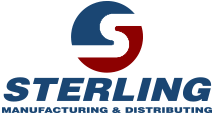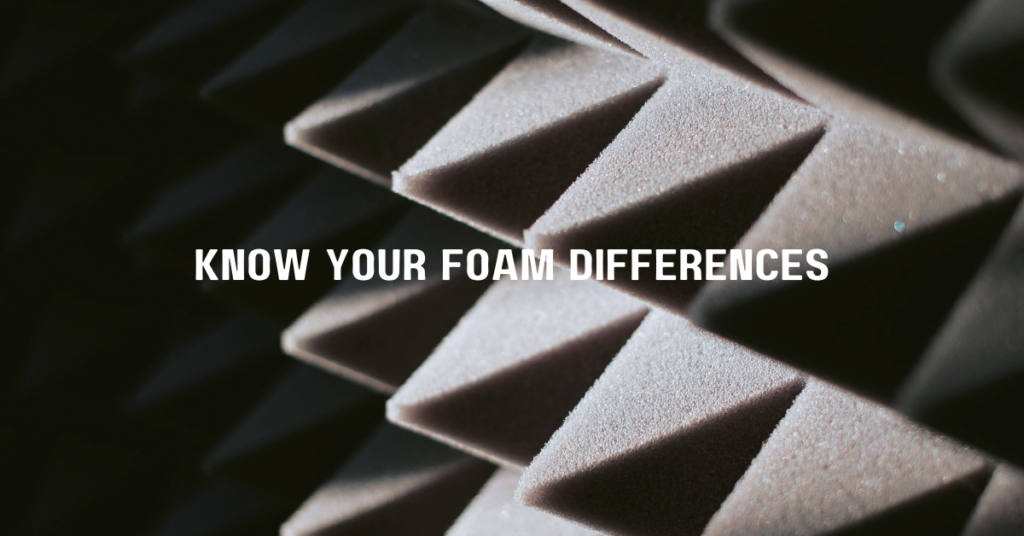Welcome to our comprehensive guide on polyurethane, polyethylene, and EVA foam materials! As a leading supplier of foam materials, Sterling Manufacturing & Distributing prides itself on offering expertise and high-quality products tailored to meet the unique requirements of our diverse clientele. Foam materials are incredibly versatile, with applications spanning numerous industries. However, understanding the differences, applications, and advantages of each foam type is crucial for making informed decisions and selecting the best choice for your specific needs.
In this in-depth guide, we will provide an overview of three popular foam materials: polyurethane, polyethylene, and EVA foam. We’ll also discuss the key benefits of incorporating foam materials into your projects—ranging from their incredible adaptability and customizability to their cost-effective and eco-friendly nature. Through detailed comparisons and real-world examples, we’ll showcase the potential of each foam material to elevate the performance, durability, and success of your products and endeavors.
As we navigate this informative journey, stay tuned for valuable insights into when and how to utilize polyurethane, polyethylene, and EVA foam in your specific industry.
Comparing Foam Material Properties: Polyurethane, Polyethylene, and EVA Foam
Before delving into the applications and benefits of each foam material, it’s essential to understand their unique properties and characteristics. This knowledge will empower you to select the best choice for your specific industry and project requirements.
1. Polyurethane Foam: Polyurethane foam is a versatile and adaptable material known for its softness and flexibility. It comes in various densities and hardness levels and can be either open-celled or closed-celled. Open-celled polyurethane foam provides excellent cushioning and shock absorption, making it ideal for packaging applications and seating solutions. Closed-celled polyurethane foam offers more rigidity and is well-suited for applications requiring structural support or insulation.
2. Polyethylene Foam: Polyethylene foam is a closed-cell foam material, prized for its outstanding shock absorption, energy return, and durability. It is also resistant to moisture, chemicals, and environmental stress, making it a popular choice in protective packaging and various industrial applications. Polyethylene foam comes in various densities, allowing for customization based on specific requirements.
3. Ethylene-Vinyl Acetate (EVA) Foam: EVA foam, a copolymer of ethylene and vinyl acetate, is an elastomeric closed-cell material. This foam material is characterized by its lightweight, flexible, and durable nature. Like polyethylene foam, EVA foam is resistant to moisture, chemicals, and environmental factors. It is often employed in applications that require cushioning, protection, and mild shock absorption.
Applications of Polyurethane Foam
Polyurethane foam’s adaptable properties and ability to cater to various densities and hardness levels make it an excellent choice for numerous applications. Some common uses for polyurethane foam include:
1. Furniture and Bedding: Open-celled polyurethane foam is widely used in furniture and bedding applications due to its cushioning and comfort properties. Mattresses, seat cushions, sofa backrests, and pillows often incorporate polyurethane foam for added support and softness.
2. Packaging: Polyurethane foam, especially closed-celled foam, is employed for protective packaging due to its shock absorption capabilities and flexibility. It is ideal for safeguarding fragile, sensitive, or high-value items during storage and transportation.
3. Automotive: Polyurethane foam is extensively used in automotive applications, including seat cushions, headrests, armrests, and dashboard components. The foam contributes to comfort, insulation, and energy absorption in these applications.
Applications of Polyethylene Foam
Polyethylene foam’s remarkable durability, energy return, and resilience make it suitable for various applications, such as:
1. Protective Packaging: Polyethylene foam’s outstanding shock absorption lends itself to protective packaging applications, particularly for fragile and high-value items. Its ability to repeatedly protect items from impact makes polyethylene foam a popular choice for industrial and electronics packaging.
2. Sports and Leisure: Due to its durability, moisture resistance, and cushioning properties, polyethylene foam is often used in the production of fitness equipment, camping mats, and water sports gear.
3. Construction and Insulation: Polyethylene foam, with its insulation and moisture resistance capabilities, is frequently employed in building construction for sealing gaps and acting as a thermal barrier.
Applications of EVA Foam
EVA foam’s lightweight and flexible nature, combined with its resistance to moisture and chemicals, make it a suitable choice for applications such as:
1. Footwear: EVA foam is commonly used to create cushioned midsoles for athletic and casual shoes, providing lightweight, responsive cushioning and shock absorption.
2. Sports Equipment: EVA foam is often found in sporting goods, such as mats, padding, and protective gear, due to its flexibility and cushioning properties.
3. Children’s Products: The soft, cushioned feel and non-toxic nature of EVA foam make it a popular material for use in children’s toys, play mats, and educational products.
Benefits of Utilizing Foam Materials
Regardless of the specific foam material chosen, incorporating foam into your products and projects can yield numerous benefits:
1. Adaptability and Customization: Foam materials can be tailored to meet specific requirements, such as desired density, hardness, and size.
2. Cost-Effectiveness: Foam materials offer an affordable solution for various applications without sacrificing performance or quality.
3. Eco-Friendly: Many foam materials are recyclable, making them an environmentally responsible choice for industries and businesses seeking to minimize waste and environmental impact.
Polyurethane, polyethylene, and EVA foam materials each offer unique properties and advantages that cater to diverse applications across various industries. By understanding the differences, applications, and benefits of each material, you can select the best foam solution for your business’s specific needs. These foam materials not only enhance product performance but also contribute to cost savings and environmental sustainability.
At Sterling Manufacturing & Distributing, we take pride in supplying high-quality polyurethane, polyethylene, and polyurethane foam materials customized to your industry-specific requirements. Contact us today to learn more about our foam offerings and discuss how we can support your business in achieving its goals through tailored foam solutions!
Call us today and we can help you choose the best foam for your next application or project! 713.695.5333 or email us at INFO@STERLINGHOUSTON.COM.


